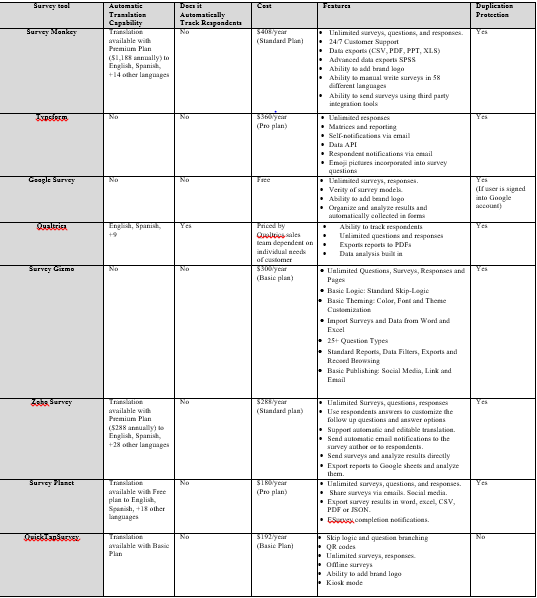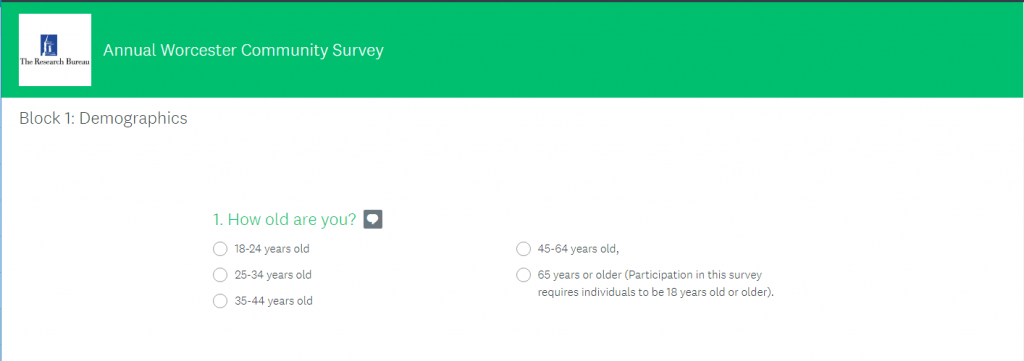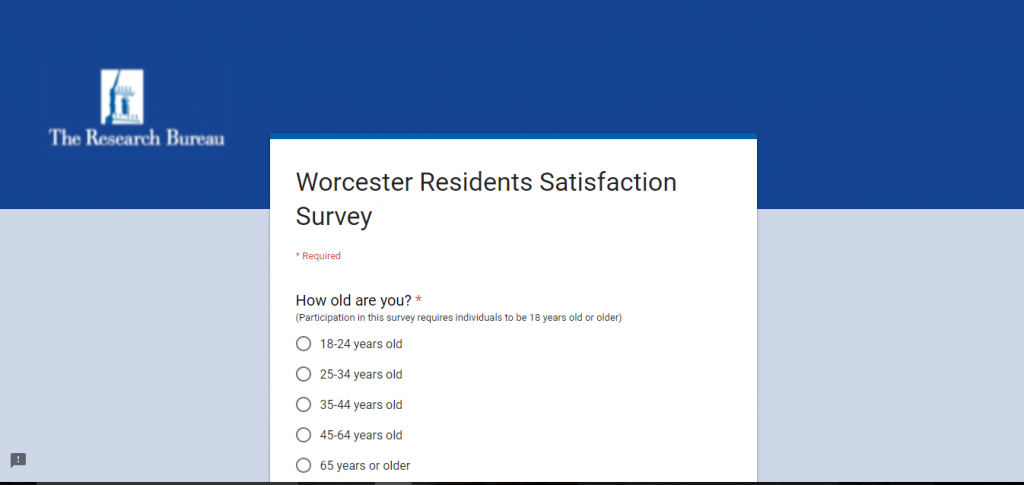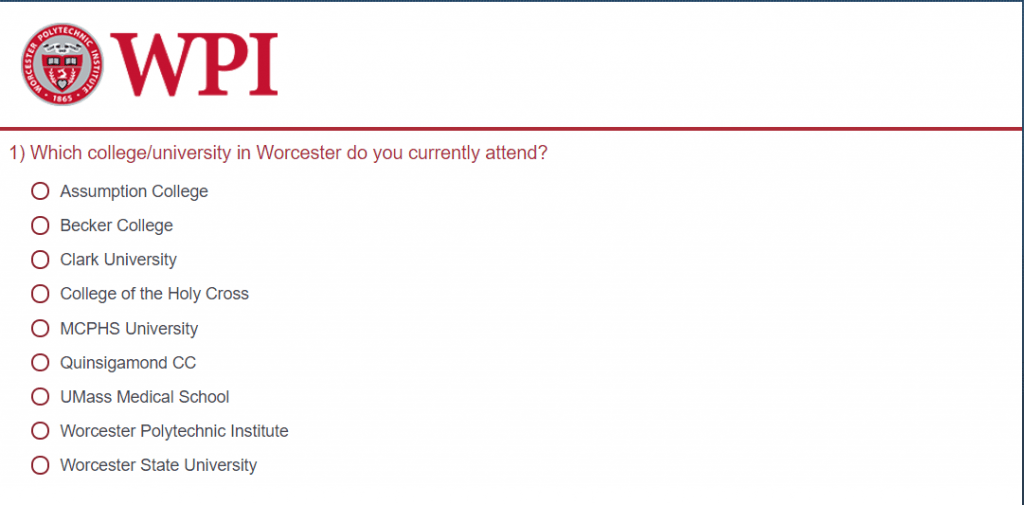Executive Summary:
Worcester, Massachusetts is a city with a long and complex history. Worcester, which used to be a popular mill and railroad city from the time of the Industrial Revolution to approximately the 1980’s, is now a city that is attempting to redevelop its brand (Worcester History, 2017). The city has made strides in improving its downtown area and some neighborhoods, but it still lacks a definitive path forward. Worcester is run by a council-manager form of government. This council acts as the legislative body for the city (City of Worcester, 2017). Part of the city council’s operation is to seek input from local residents and allow resident opinion to influence their decision making.
Like many cities, Worcester struggles with a lack of resident civic engagement. The Worcester Regional Research Bureau (Research Bureau), a three decade old not-for-profit organization that conducts research to influence policy making, has become aware of this issue. Consequently, both the Research Bureau and the city government are seeking input from a broader array of residents (McGourthy, 2017). Our goal in working with the Research Bureau was to create a tool that can be used to survey residents of all ethnic and cultural backgrounds over an extended period of time. We believe that with this survey, the Research Bureau and the city can identify trends in Worcester residents’ opinions and behaviors on a periodical basis.
Residents providing feedback to the city government is a form of being civically engaged. Civic engagement is defined as “individual and collective actions designed to identify and address issues of public concern” (Delli Carpini, 2006). Civic engagement is important because it allows for city residents to have their opinion properly heard, helping catalyze change and facilitate creation of new ideas. In Civic Engagement in American Democracy, political science professors Theda Skocpol and Morris Fiorina argue that the lack of civic engagement by large sections of the population enables “small cadres [to] push extreme or narrow causes, framing an overall public debate only tangentially relevant to the values and concerns of most citizens” (Fiorina, Skocpol, 1999. p. 2). When this occurs, the same views and opinions are repeatedly used in the political process, and there is never anyone with a rival viewpoint to oppose these groups.
There are many cities across the nation that employ community surveys as a means of collecting resident perception. Cities such as San Francisco, California; San Diego, California; and Bangor, Maine, have successfully built stronger communication channels between citizens and governments using surveys as a method of measuring opinion. Table 2 below illustrates the comparisons of the three cities:
| City | Administered By: | Primary Survey Distribution Method: | Number of Respondents | Key Findings: |
| San Francisco | San Francisco Office of the Controller | Telephone | 2,179 | 29% of residents reported they planned on moving out in the following three years |
| San Diego | ETC Institute | Postal Mail, Online, and Telephone | 2,478 | 50% of respondents preferred to report information through the city website |
| Bangor | Graduate Student: Jaymi Thibault | Online and Focus Groups | 532 | 44% preferred social media as a communication channel |
Table 2: Comparison of City Surveys
All three of the studies resulted in the researcher(s) uncovering and qualifying some significant findings that could assist the city governments in creating and adjusting policies. However, each city had a different entity administer the community survey. Another distinction among the studies was the primary survey distribution method or methods that were used.
Methodology
The team created six objectives in order to properly create an online survey tool for the Worcester Regional Research Bureau. We first assessed Worcester’s current methods for measuring resident perception, and we looked at seven other cities across the nation that have or currently measures their residents’ perceptions. We then evaluated the findings from our first two objectives to determine what survey methods were feasible in Worcester. To be able to integrate residents’ preferences into both the survey distribution methods and the question content, we conducted focus groups and interviews with residents in Worcester. Then, we determined which surveying program was the most appropriate to use and developed our community survey. Finally, we provided recommendations for future utilization of the survey to our sponsors as well as additional thoughts on the status of government-resident communication in Worcester.
Findings
Worcester’s Current Approach to Gathering Resident Input
We discovered that Worcester has only had three community wide surveys since the 1990’s. They took place in 1994, 2001, and 2017. All three surveys were used to complement the strategic plan that the city was working on at the time. We needed to determine that there is not a current annual community survey in Worcester, so that if the team were to create an annual survey for Worcester residents, it would not overlap with any of the city’s current efforts. We also found that the Worcester city government attempts to gather input from residents using a form of online polling called crowd sourcing. Specifically, the city government uses both Twitter and Facebook in order to pose questions to residents. These questions can relate to a variety of topics, and usually only one question is asked at a time. The City of Worcester also provides an Online Customer Service Center located on its website. A phone number is on the site that redirects to the Worcester Customer Service Office, allowing residents to verbally relay their complaints (City of Worcester, 2017). There is also the opportunity for residents to provide input to the city through open city meetings. However, just like the crowd sourcing efforts and the city’s website, open meetings are another way in which the city’s current methods for collecting resident input are unclear, unknown, or difficult to locate.
Furthermore the team found that certain residents in Worcester feel uncomfortable consistently reporting information to the government. An obstacle for many government entities is creating an environment in which residents feel comfortable reporting information. In some discussions in our focus groups, we heard that some residents would rather have a non-government organization (NGO) gather input. They believed that if a NGO was responsible for this information, there would be less bias in the reports that detail the responses of residents’ opinions on the city. (Personal Communication, 2017). For these reasons, we concluded that it would be beneficial for the Worcester Regional Research Bureau to administer the survey, so that residents have a safe area to comfortably report information.
Online Survey Tool
We then compared eight different online survey programs to determine the capabilities of automatic survey translation, the cost of service, the popularity, the ability to block multiple respondents, and the data analysis capabilities. The following table illustrates the comparison of these survey providers.
Table 5: Survey Providers Comparative Table
After presenting these aspects of the survey providers to our sponsors, we mutually concluded to narrow down our list of providers to Survey Monkey, Google Form Surveys, and Qualtrics. We created trials of these surveys to demonstrate the aesthetics and functionality of each.
Survey Monkey Aesthetics
Google Forms Aesthetics
Qualtrics Aesthetics
After providing both the comparative chart and the demonstrations of the survey providers, our sponsors decided to use Survey Monkey as the online surveying tool. While it was one of the more expensive survey plans, they still chose the Survey Monkey Standard Plan for its ability to send surveys using third-party integration tools and for its data analysis capabilities.
Due to the benefit that there is no additional cost to repetitively send out the Research Bureau’s survey online, there will not be a restraint on the number of recipients for the survey. Therefore, the Research Bureau will network this survey by using the Constant Contacts emailing network application to as many Worcester residents as possible. The Research Bureau already has an email chain of Worcester residents that they could distribute the survey tool using this application, and more residents can sign up to receive the survey if they please.
For a survey to be used over time, the questions asked would have to be relevant for a longer period of time. We determined the need to craft questions that could consistently measure trends over time. We didn’t want any questions that would only be relevant in 2017. We also found that the most useful survey to gather Worcester resident opinion would contain both depth and breadth. It is important to create detailed questions that lead to specific data while at the same time limiting the length of the survey. A method we learned in our research of other surveys and results from focus groups that could assist in limiting the length of the survey was creating question blocks. Questions blocks can be useful for restricting the survey time and for organizing data by specific categories. The team created six question blocks, two of which will always be used in the survey distribution and four of which will be constantly rotated in and out of the survey. The question blocks are illustrated in Table 4 that follows:
| Block | Used | Content of Questions |
|
1
|
Always | Demographics |
| 2 | Always | Broad questions about satisfaction with Worcester |
| 3 | Winter |
Questions that can be used in the winter season – Streets and Sidewalk Conditions – Parking in Worcester – Snow Removal |
| 4 | Spring |
Questions that can be used in the spring season – Crime in Worcester – Public Schools |
| 5 | Summer |
Questions that can be used in the summer season – Parks and Recreation – Streets and Sidewalks Conditions – Public Transportation |
| 6 | Fall |
Questions that can be used in the fall season – Public Schools – Public Health – Crime in Worcester |
Question Blocks for Survey
The group also had to assure that the survey would allow for respondents to complete it while remaining completely anonymously. Despite the demographic questions requiring some answers that may relate to the identity of a respondent, none of the answers that can be given in that block, or any other question block in the survey, will compromise a respondent’s anonymity. This is done in order to address concerns about resident safety and create a channel for residents to comfortably provide input to the Research Bureau about the city. Finally, the group integrated some of the major concerns that Worcester residents voiced in our focus groups and interviews into the question content on the survey.
Next Steps and Final Thoughts
During the course of our project, we also collected additional data and key points of interest from our research, interviews, and focus groups. These additional findings and recommendations can be used in the future to assist the Research Bureau in building and expanding the survey tool. We found that using multiple methods of survey distribution could potentially increase response rates. We heard from multiple residents that there is not a singular solution when it comes to government-resident communication (Personal Communication, CPPAC Focus Group, 2017). This means that while online communication is the most popular for many residents, there are some residents who prefer communication through snail mail or the phone. For this reasons, in the upcoming years, we recommend that the Research Bureau incorporate additional means of distributing the survey, whether it be snail mail or the phone. We also discovered that a popular method for communication between cities and their residents is social media. Mainly, government officials have been using Facebook and Twitter more often to provide and receive information. In our focus group with the Latino Education Institute, many Hispanic and Latino residents said that they use social media to receive information from the city. This same group was largely unaware of the main platforms that are available for receiving information from the city. However, a majority of the focus group participants had access to social media and therefore used platforms such as Facebook and Twitter to gather information from the City of Worcester. Based off of this and other information we found we recommend that The Research Bureau could use social media to advertise the online survey tool and poll residents on other topics if the occasion ever arises.
Conclusion:
The involvement by city residents is important in order for the City of Worcester to continuously become a thriving and safe community for all. The input that is given by residents is crucial for policy makers to synthesize the opinions and feelings of the community. Organizations like the Worcester Regional Research Bureau provide a comfortable and safe channel for residents to give input on a variety of topics relating to the City of Worcester. The use of the Research Bureau’s online survey will produce an accurate representation of the perceptions of residents in Worcester for the city government to use in conjunction when creating and revising policies. We believe that this will assist Worcester in its efforts to become a more welcoming environment for residents as well as improve upon the many aspects that makes the city great.




